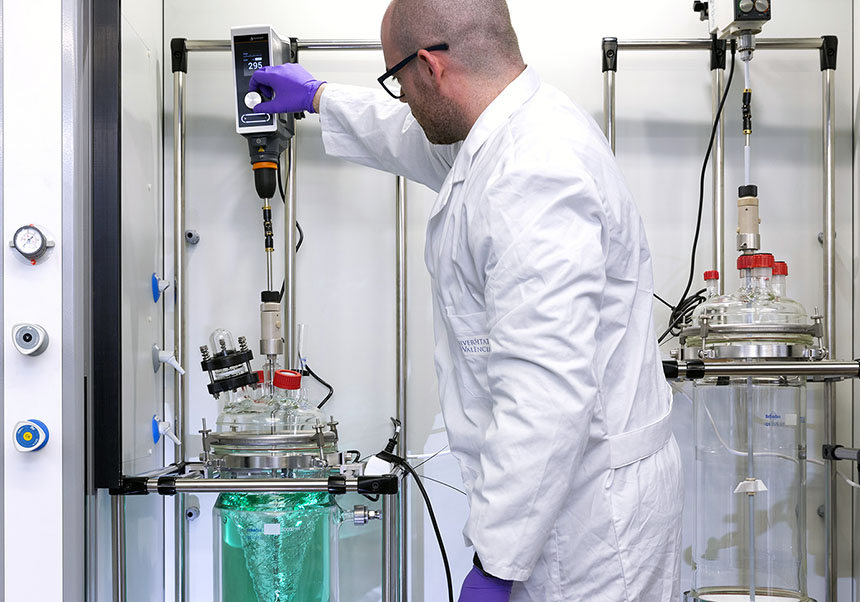Researchers discover a mechanism for mercury re-emission from ice to the atmosphere in the polar spring
- Science Park
- March 11th, 2025

An international research team, co-led by the University of Valencia, has discovered a mechanism by which mercury deposited in polar ice returns almost entirely to the atmosphere with the arrival of spring in the Arctic. This finding, achieved through computational chemistry techniques and published in the journal PNAS, provides new insight into the biogeochemical cycle of mercury, a global pollutant and a toxic element for the nervous system of living beings.
Mercury is released into the atmosphere due to both human activities and geological processes. This metal is distributed across the planet, including polar regions, using the atmosphere as a transport medium. During spring, when the first rays of sunlight appear, mercury deposition events occur, transferring mercury from the atmosphere to the polar surface. This is due to the oxidation of mercury by bromine radicals generated by sunlight. Field measurements indicate that mercury is not removed from the atmosphere during these events; rather, a significant portion of this toxic metal returns to planetary circulation.
The Quantum Chemistry of the Excited State (QCEXVAL) group of the Institute of Molecular Science (ICMol) of the University of Valencia, based at the university’s Science Park, is part of the international team that has uncovered a mechanism responsible for this process, which had remained misunderstood by science for decades.
The results of the study, published in PNAS (Proceedings of the National Academy of Sciences) and obtained using advanced computational chemistry tools, suggest that the photoreduction of mercury and bromine compounds — mercuric bromides — present in polar snow plays a key role in the re-emission of mercury from the ice surface into the atmosphere. “The techniques we have helped to develop allow us to directly predict, using computers, what happens to the pollutants present in the troposphere and stratosphere when exposed to sunlight”, explains Daniel Roca-Sanjuán, a researcher at the Institute of Molecular Science (ICMol) at the University of Valencia and co-leader of the project. “We can estimate the rate at which the molecules break apart due to solar light absorption and identify the new compounds that form”, he adds.
According to the article, the work combines multiconfigurational quantum chemistry with computational methods capable of determining the ‘excited-state chemistry’ that takes place in the Arctic ice sheet when spring arrives. These excited states, generated by sunlight, have a significant influence on the behaviour and distribution of pollutants across the planet.
The study is authored by Javier Carmona García, who recently completed his PhD at the University of Valencia, and is co-led by Daniel Roca-Sanjuán (UV), Alfonso Saiz-López (CSIC) and Joseph S. Francisco (University of Pennsylvania, USA). The collaborative team has been working for years to understand the atmospheric mercury cycle, incorporating data on ‘sunlight-induced excited-state chemistry’ — quantum information that is rarely considered — into atmospheric and climate models.
Mercury pollution is a global concern and, according to the authors of the study, understanding its biogeochemical cycle is essential for implementing effective mitigation measures. “This is particularly important as climate change is causing amplified regional warming in the Arctic, disrupting the mercury cycle in the cryosphere, soils, ocean and atmosphere. Therefore, there is a clear need to develop mechanistic biogeochemical models to predict how mercury pollution in the Arctic will evolve under future global change scenarios”, the article concludes.
Reference:
Photoreduction of mercuric bromides in polar ice. Javier Carmona-García, Alfonso Saiz-Lopez, Anoop S. Mahajand, Feiyue Wange, A. Borrego-Sáncheza, A. Ulises Acuña, Carlos A. Cuevas, Juan Z. Dávalos, Aryeh Feinberg, Andrea Spolaorf, Manuel F. Ruiz-López, Joseph S. Francisco, and Daniel Roca-Sanjuán. PNAS 2025.
More information:
File in: Química , Ciencias de la Vida















